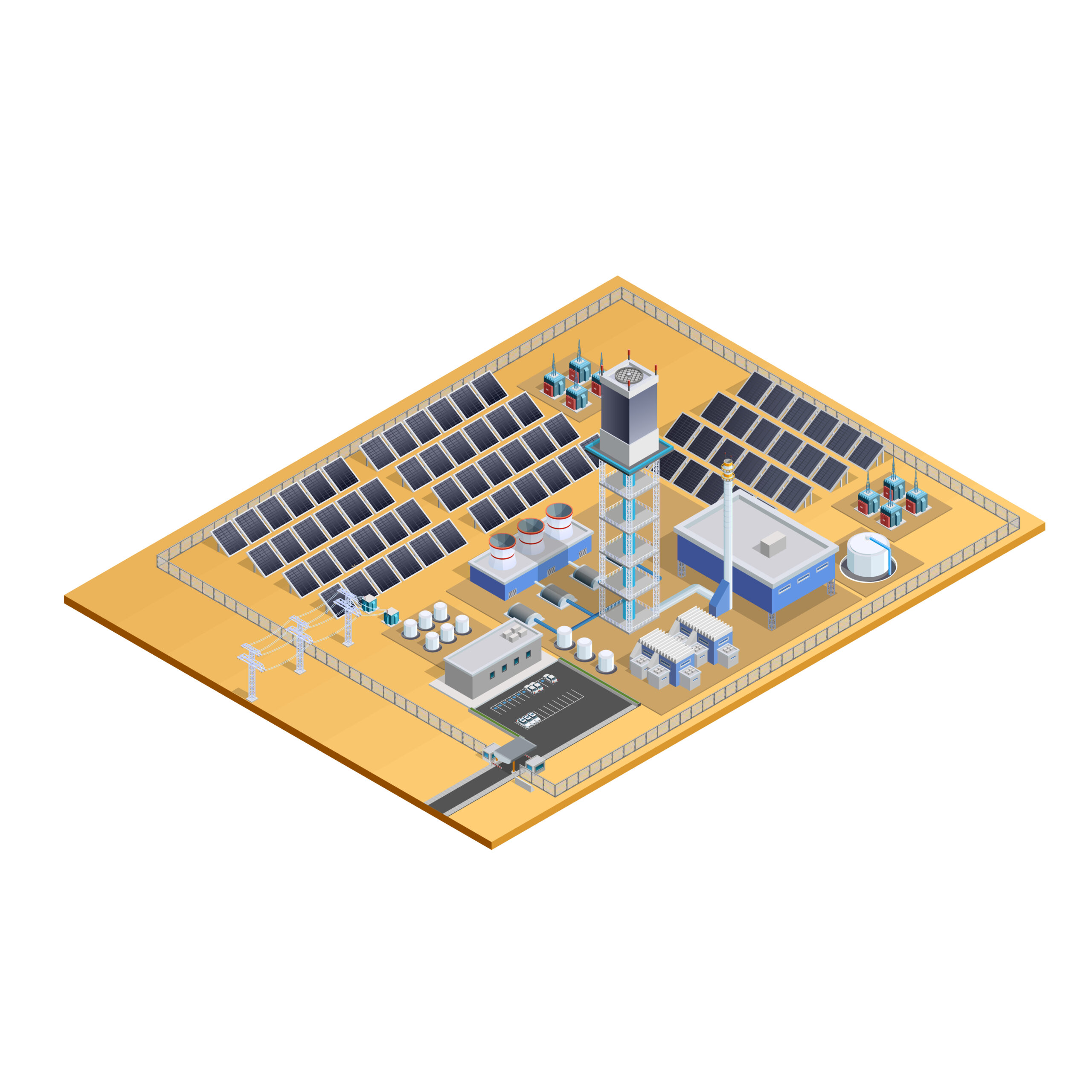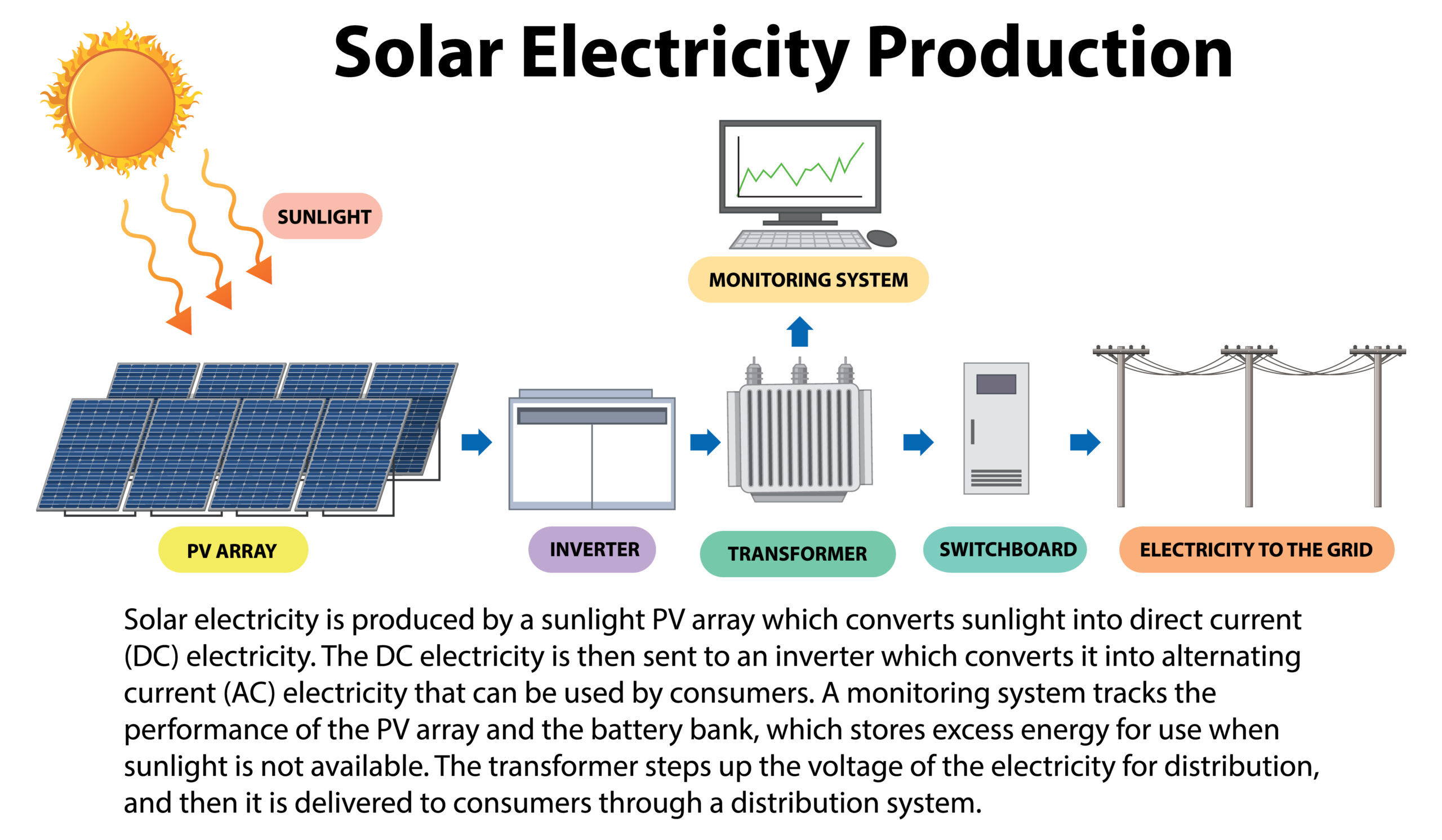In the quest for sustainable and eco-friendly energy sources, concentrated solar power (CSP) has emerged as a promising solution. By harnessing the power of the sun through innovative technologies, CSP has the potential to revolutionize the global energy landscape. In this comprehensive article, we will explore the intricate details of concentrated solar power efficiency, delving into its principles, applications, benefits, and challenges.
The Fundamentals of Concentrated Solar Power
Concentrated Solar Power Efficiency: Harnessing the Power of the Sun begins with understanding the underlying principles of this renewable energy source. CSP utilizes mirrors or lenses to concentrate sunlight onto a small area, converting solar energy into thermal energy. This thermal energy is then used to generate electricity or provide heating and cooling for various applications.
Types of Concentrated Solar Power Technologies
To maximize efficiency and harness solar energy effectively, various CSP technologies have been developed. These include:
- Parabolic Trough Systems
- Solar Power Towers (Heliostat Systems)
- Linear Fresnel Reflectors
- Dish Stirling Systems
Each technology employs unique methods to concentrate sunlight, catering to different energy demands and geographical locations.

Parabolic Trough Systems: Bending Sunlight to Power
Parabolic trough systems use curved mirrors shaped like parabolic cylinders to focus sunlight onto a receiver tube located at the trough’s focal point. This concentrated solar energy heats a heat transfer fluid inside the receiver, producing steam that drives a turbine connected to an electricity generator.
These systems are widely used due to their efficiency and ability to operate even on overcast days, making them a reliable energy source.
Solar Power Towers: Reaching New Heights
Solar power towers, also known as heliostat systems, utilize an array of mirrors (heliostats) to direct sunlight onto a receiver at the top of a tower. The receiver heats a heat transfer fluid or molten salt, which can then be stored for later use. The stored thermal energy can generate electricity through steam turbines or power industrial processes.
The scalability and potential for energy storage make solar power towers a valuable asset in meeting peak energy demands.
Linear Fresnel Reflectors: A Sleek Alternative
Linear Fresnel reflectors use long, flat mirrors to concentrate sunlight onto a receiver tube. These mirrors move to track the sun’s position throughout the day, optimizing energy capture. The heated fluid within the receiver tube generates steam, which powers turbines to produce electricity.
This technology offers a cost-effective alternative to parabolic trough systems and holds promise for small to medium-scale energy applications.
Dish Stirling Systems: A Focused Approach
Dish Stirling systems concentrate sunlight onto a single point using parabolic dish reflectors. At the focal point, a Stirling engine converts thermal energy into mechanical energy, which drives an electricity generator.
This technology is particularly suitable for distributed power generation in remote areas.
LSI Keywords: Solar Energy, Sustainable Energy, Renewable Energy, Concentrated Solar Power, Solar Power Towers, Parabolic Trough Systems, Linear Fresnel Reflectors, Dish Stirling Systems, Heliostat Systems, Sunlight Concentration, Concentrated Solar Power Efficiency.
Advantages of Concentrated Solar Power Efficiency
Harnessing the power of the sun through CSP offers numerous benefits that contribute to a sustainable future:
1. Abundant and Renewable Energy Sources
The sun is an infinite and clean energy source, making CSP a renewable alternative to fossil fuels that deplete over time.
2. Reduced Greenhouse Gas Emissions
CSP produces minimal greenhouse gas emissions, mitigating the negative impact of conventional energy sources on the environment.
3. Energy Storage Capabilities
Some CSP technologies allow for thermal energy storage, enabling consistent power generation even when the sun is not shining.

4. Scalability and Versatility
CSP systems can be scaled to meet varying energy demands, from large-scale power plants to small off-grid installations.
5. Job Creation and Economic Growth
The adoption of CSP can create job opportunities and stimulate economic growth in the renewable energy sector.
6. Energy Independence
Countries with ample sunlight resources can reduce their dependence on imported fossil fuels by embracing CSP.
7. Long Lifecycle and Low Operating Costs
CSP systems have a long operational lifespan and require minimal maintenance, making them a cost-effective energy solution.
Challenges to Overcome
While concentrated solar power efficiency holds immense promise, there are challenges that must be addressed to achieve widespread adoption:
1. High Initial Investment
The setup cost for CSP plants can be substantial, deterring potential investors and governments from immediate implementation.
2. Land and Water Usage
CSP plants require vast areas of land and significant water resources for cooling, raising concerns about environmental impacts.
3. Intermittency
Solar energy is intermittent, dependent on weather conditions and daylight hours, necessitating energy storage solutions for continuous supply.
4. Technological Advancements
Continued research and development are necessary to enhance CSP technologies, making them more efficient and cost-effective.
5. Integration with Existing Grids
Integrating CSP power into existing electrical grids requires careful planning and coordination to ensure seamless operations.
6. Public Perception
Public awareness and acceptance of CSP are vital for its successful implementation and market growth.
Concentrated Solar Power Efficiency: A Step Towards a Sustainable Future
Concentrated Solar Power Efficiency: Harnessing the Power of the Sun is a significant step toward a greener and more sustainable future. Embracing renewable energy sources like CSP can pave the way for reduced carbon emissions and a cleaner environment. As technology advances and economies of scale are achieved, the widespread adoption of CSP could be the key to a brighter and more eco-friendly tomorrow.
FAQs
- What is Concentrated Solar Power Efficiency?
CSP efficiency refers to the ability of concentrated solar power systems to convert sunlight into usable energy with minimal losses.
- How does CSP differ from photovoltaic solar panels?
CSP uses mirrors or lenses to concentrate sunlight, while photovoltaic solar panels directly convert sunlight into electricity.
- Can CSP generate electricity during the night?
CSP systems with thermal energy storage can generate electricity during the night or during cloudy periods.
- What countries lead in CSP deployment?
Spain, the United States, and China are among the leading countries in concentrated solar power installations.
- Is CSP suitable for residential use?
CSP is primarily used for utility-scale electricity generation and industrial applications rather than residential use.
- How does CSP contribute to climate change mitigation?
By producing clean electricity with minimal greenhouse gas emissions, CSP helps reduce the overall carbon footprint of energy generation.
Conclusion
Concentrated Solar Power Efficiency: Harnessing the Power of the Sun presents a compelling case for the potential of concentrated solar power in meeting our energy needs sustainably. From its innovative technologies to the environmental advantages it offers, CSP can play a pivotal role in combatting climate change and ensuring a cleaner and greener future for generations to come. As technology continues to evolve and costs decline, the sun’s power harn
